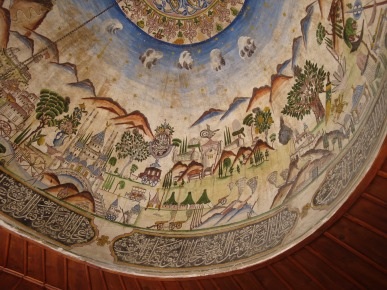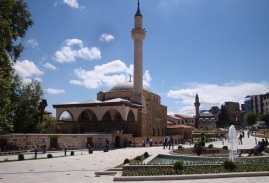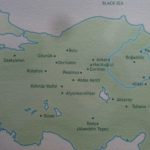Historic Ottoman town Population: 62,500
Old name: Marzvan (Armenian), Merzifounta (Greek)
Market day: Friday
Favourite son: Kara Mustafa Paşa (Grand Vizier)
The outskirts of Merzifon are full of the usual dull concrete modern buildings but these conceal the much older historic structures that lie at the heart of a quiet market town that’s well worth a short detour to see a mosque complex more complete even than that of II Beyazıd in Amasya.
Don’t leave town without trying Merzifon keşkek at the Bedesten Restaurant
Around town
If you walk uphill behind the bus station you will come almost immediately to an equestrian statue of the Grand Vizier Kara Mustafa Paşa (1634-83) who was born in the nearby village of Marınca and led his troops to defeat at the gates of Vienna in 1683. For that “crime” he was executed by being strangled with a silk cord. 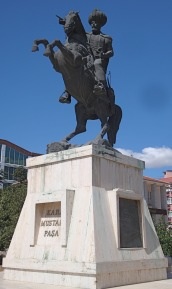
Keep walking straight ahead and you will come to the rambling Tuzpazarı (Salt Market) area where the hamam was restored in the early 2010s. Stroll between the shops until you emerge beside the small Dönertaş Cami (1515) with the landscaped main square, dominated by the Kara Mustafa Paşa Külliyesi (mosque complex), to the right.
This complex dates back to 1666 and consists of the mosque itself, and a bedesten (market hall), han (inn for travellers) and arasta (shopping arcade), all of them restored.
But perhaps the most striking feature of the complex is the şadırvan (fountain), one of a group with those in Tokat and Amasya that feature large “witch’s hat” caps over deep marble pools of water with taps set into the side. Like the one at the II Beyazıd complex in Amasya, this one has lovely folk art paintings dating back to 1875 on its interior as well as calligraphic panels running round the edge. The pictures are thought to show İstanbul, Amasya and the Turkish army before the gates of Vienna. A roundel amid the paintings identifies the artist as Emin from Zile. One would assume his was also the hand behind the Amasya şadırvan.
If you exit the courtyard from the entrance facing the mosque you will emerge opposite the Çifte Hamamı. Alternatively you can leave via an arched gateway that leads down steps to the han on the left and the bedesten on the right. The latter has been turned into a delightful restaurant. If you walk between the two you will come to the older Tacettin İbrahim Paşa Cami (1443) whose şadırvan is set into a dip beside it.
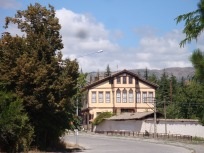 Strike off from the town centre to find some of Merzifon’s surviving Ottoman houses including the restored Mehmet Kutucu Konağı and another that was built in 1923, the year of the Republic’s birth. You may also find a building that was once a 19th-century church and then a cinema until it burnt down but that has now been restored.
Strike off from the town centre to find some of Merzifon’s surviving Ottoman houses including the restored Mehmet Kutucu Konağı and another that was built in 1923, the year of the Republic’s birth. You may also find a building that was once a 19th-century church and then a cinema until it burnt down but that has now been restored.
Also worth looking out for is the tiny Alaca Minare Cami, with an original wooden door, and the huge nearby Paşa Hamamı that still serves men and women, albeit at different times.
Eating
The Bedesten Restaurant in the bedesten beside the mosque is a superb conversion of a historic building that manages to be both true to its history and yet modern in design at the same time. It advertises Ottoman cuisine and dishes up tasty local treats such as Merzifon keşkek and assorted fruit sherbets with suitably Ottoman names. A great surprise and one worth travelling some distance to enjoy. (Tel: 0358-505 0102) 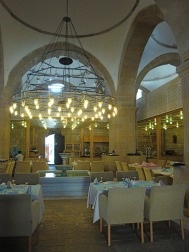
Sleeping
You will probably want to visit Merzifon from Amasya although the Hotel Valente overlooking the statue of Kara Mustafa Paşa is unmissable for its size.
The imaret facing the Bedesten Restaurant has been converted into the Tuğra Hotel. Tel: 0362-714 2500
Transport info
Minibuses leave Amasya for Merzifon every half-hour from between the rebuilt Saraydüzü Barracks and the Büyük Ağa Medresesi.
From Merzifon there are dolmuşes to Çorum, Osmancık, Havsa, Suluova, Hamamözü and Gümüşhacıköy.
